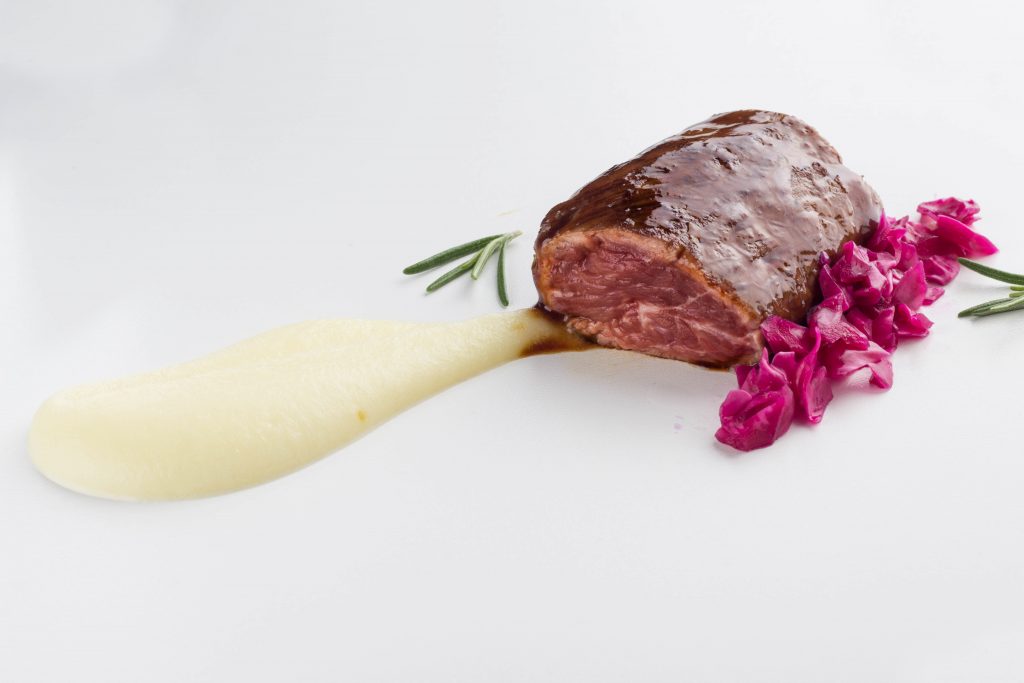Blog
A trip in the world of catering
Sheep meat is not commonly used in the Italian culinary tradition since animal farms are traditionally for wool and milk production rather than for
meat production. Moreover, its consumption has always been limited because of its particularly strong and intense flavour. This kind of meat varies according to the age of the animal: it is called lamb up to one year of age, then it becomes sheep or mutton depending on the sex, while the wether is the castrated male sheep, slaughtered between the first and the second year of age.
If slaughtered young, sheep meat, in particular lamb, can be more tender and tastier than beef, while a mutton or a wether is usually characterised by a tougher, less white meat, but which is tastier and has a stronger flavour.
Specifically, wether is ideal for braising, such as in a stew, in which the long cooking times act to reduce the taste of wild animal as well as to tenderize meat, making it a dish appreciated by all, not only by enthusiasts.
With waveco® and its induced maturation©, it is possible to prepare this kind of meat in less time, obtaining increased tenderness and palatability and reducing its intense and almost wild flavour, keeping its nutritional properties unchanged.
Below you can find a regional recipe from Abruzzo, which allows to enhance the benefits of waveco®: “Wether with mashed potato and fermented red cabbage”. For this recipe, use brown stock, potatoes, 1 kg of wether and one red cabbage.
FERMENTED RED CABBAGE
Washed and cut into small pieces, put it into a container with water and vinegar and start the induced maturation© process. In a short time (60 minutes), you will obtain a product with intact organoleptic properties that is ready for the fermentation process, which is guaranteed to start after a few days. In contrast to the traditional method, the food must not be kept at room temperature in order for the process to start, but you can store it directly in the fridge. In this case, leave it in there for three days.
TECHNICAL FOCUS: FERMENTATION
This technique of ancient origins allows you to transform the food taste and consistency, in addition to extending its shelf life. The process can be easily repeated if the following rules are carefully followed. The food, properly cleaned and washed, must be put into containers and covered with a liquid solution characterized by an acid and a sugared part. For the fermentation process to start, let the food rest in an environment at about 20°C for 10-15 days.
WETHER
Take a wether thigh and debone it to obtain the fillet; then, divide the fillet into multiple pieces of about 100-120 g. Put them into containers and start induced maturation® for 60 minutes. At the end of the process, you will have a more tender and succulent meat with a reduced “wild” aroma, thanks to the enzyme fragmentation. In addition, waveco® reduces the bacterial load, thus achieving increased food safety and a significant increment in shelf life, which allows you to use and store the meat for a longer period of time, simply leaving it in the fridge, without activating the cold chain.

TECHNICAL FOCUS: STORAGE OF MEAT
Meat is an easily perishable food that needs great attention, from the slaughtering to the consumption. Modern techniques allow to store it while maintaining its organoleptic and nutritional properties. If stored in the fridge, fresh meat can last for a few days, while the freezing process or, even better, the deep-freezing process can increase the product shelf life. Be careful not to break the cold chain. You might lose the nutritional properties of the food as well as have consequences for your health.
PLATING
Prepare a mashed potato and lay it on a hot plate. Add the wether fillet previously seared and lacquered with the brown stock prepared with leftover meat. Add the fermented red cabbage and, if you want to, rosemary.
CHEF TECHNICAL FOCUS
Thanks to induced maturation©, wether seems to be much more tender, even in its less noble parts, such as the thigh. The subsequent cooking has to be mentioned as well: this method reduces times, allowing an unusual cooking process, which gives a volume and a flavour not achievable through the classic methods. The enzyme fragmentation of the meat gives a tastier and cleaner flavour when eaten.